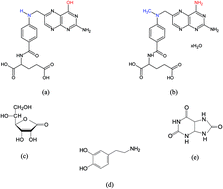There are many uncertainties concerning the use of molecularly imprinted polymers (MIPs) as electrode modifiers. In order to contribute to clarification of this issue, a large target molecule was used to prepare an MIP-modified composite electrode. The MIP was synthesized using folic acid (FA) as a template, and employed in the modification of composite electrodes based on graphite and polyurethane (GPU), varying its percentage from 2.5 to 10%. Cyclic voltammetry (CV) and differential pulse voltammetry (DPV) were used to compare the performance of modified and unmodified electrodes. After optimization of the electrode composition, pH, and the electrolytic medium, the best results for which were obtained using 2.5% MIP, pH 4.5 and acetate buffer, respectively, differential pulse voltammograms were used to obtain analytical curves for electrodes modified with the 2.5% MIP or 2.5% non-imprinted polymer (NIP), as well as for the unmodified GPU electrode. Although the sensitivities were similar in all cases, the electrode modified with 2.5% MIP presented a lower limit of detection (LOD) of 0.17 μmol L−1 and 0.034 μmol L−1 for the cathodic peaks in −0.52 and −0.58 V (vs. SCE), respectively, under specific conditions, allowing the determination of FA in commercial pharmaceutical formulations with results that were in agreement with the official HPLC method. Finally, evaluation was made of the interference of a structurally similar molecule, the methotrexate, as well as small molecules containing functional groups similar to those present in the structure of FA, such as uric acid, ascorbic acid and dopamine. The 2.5% MIP electrode was more selective than the 2.5% NIP electrode.

